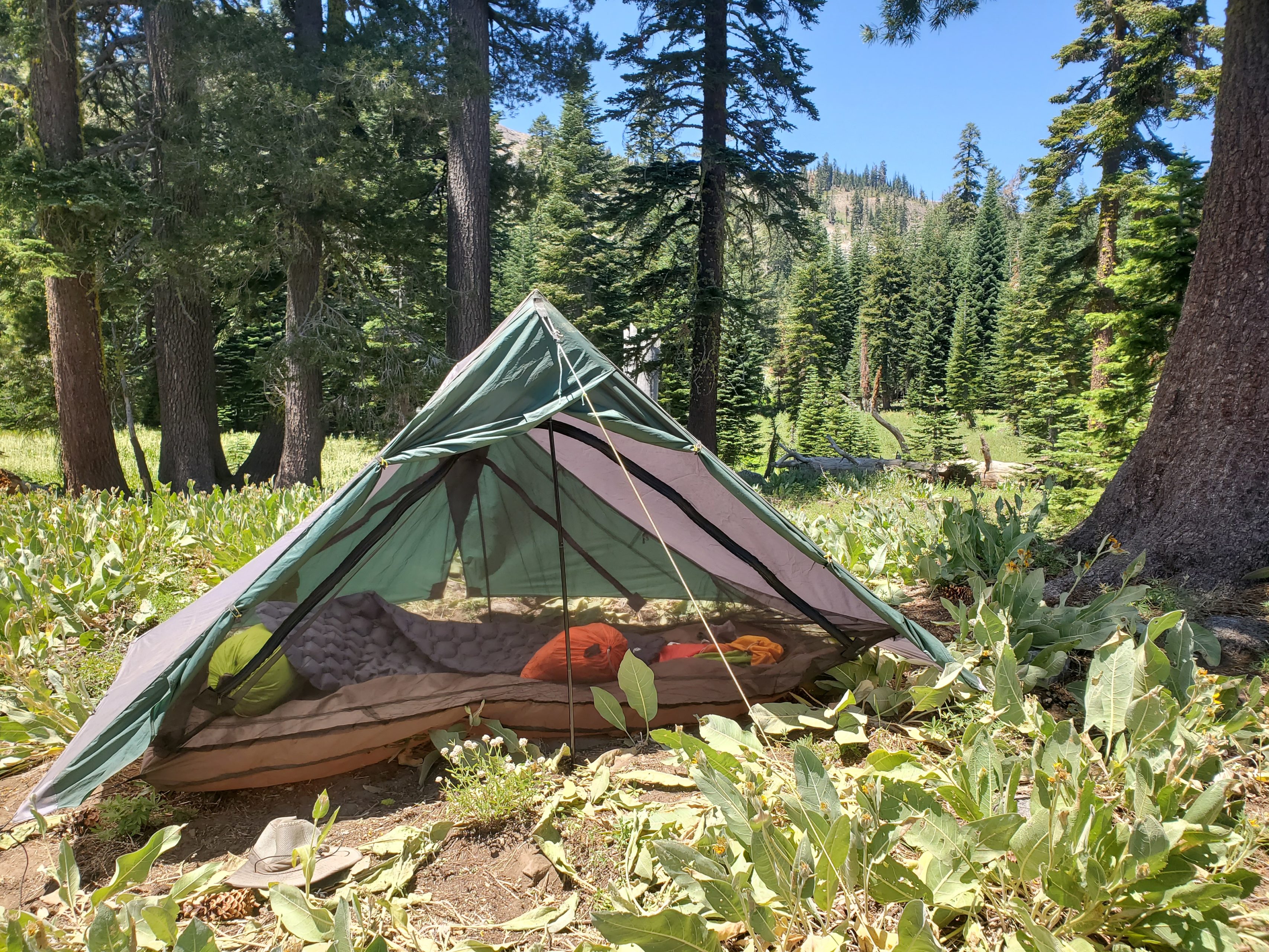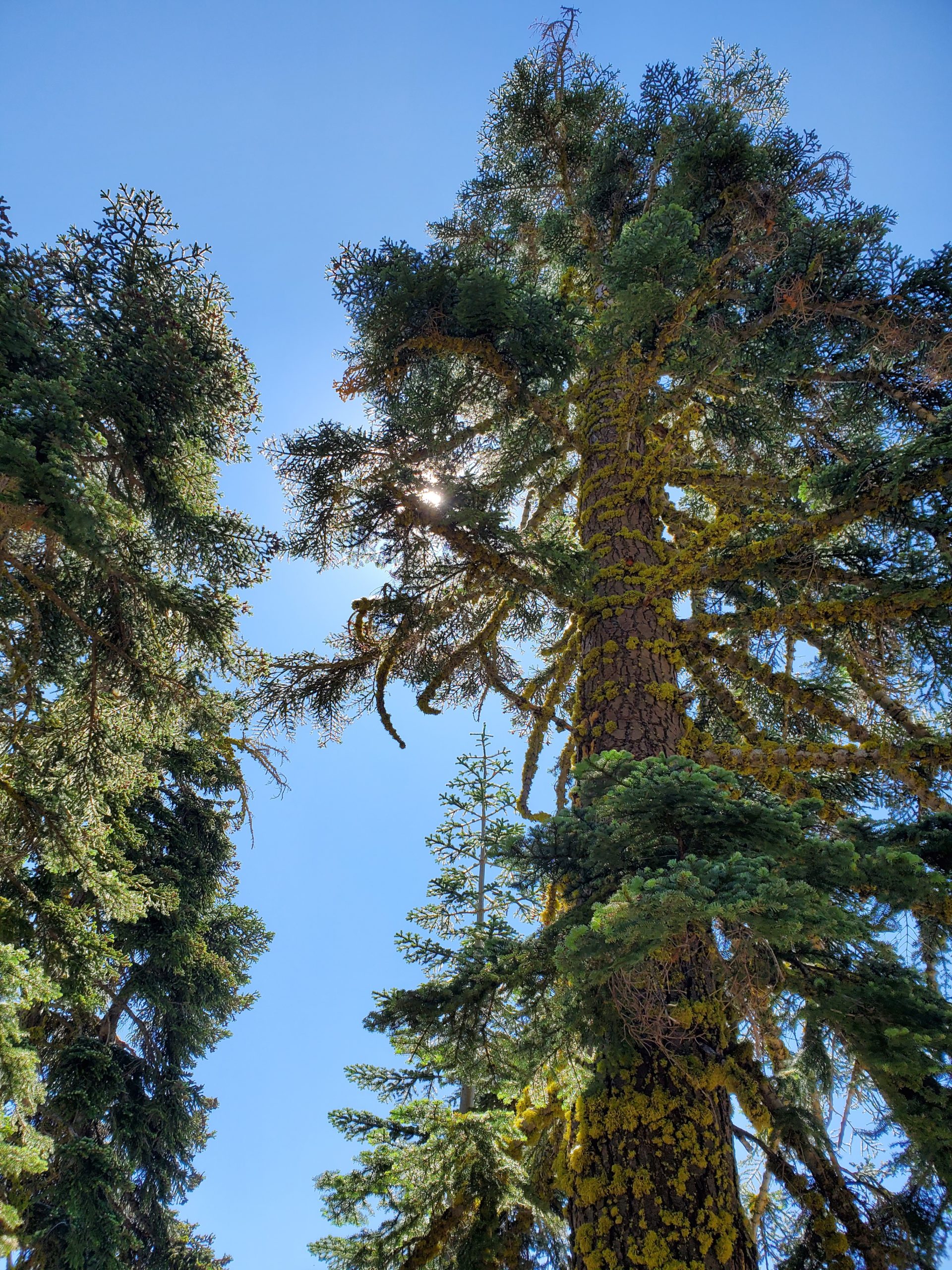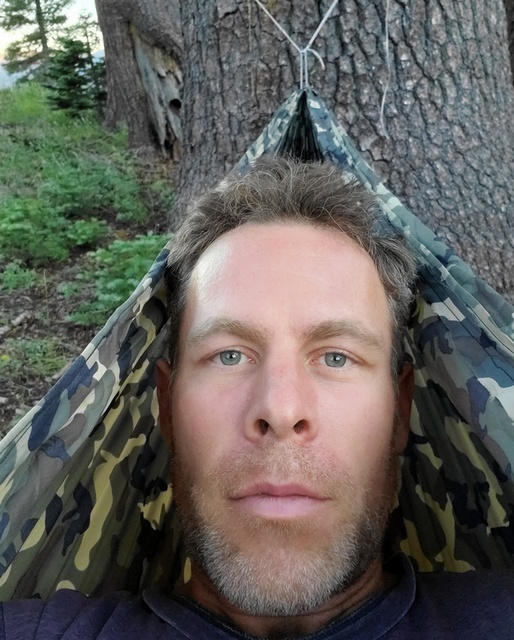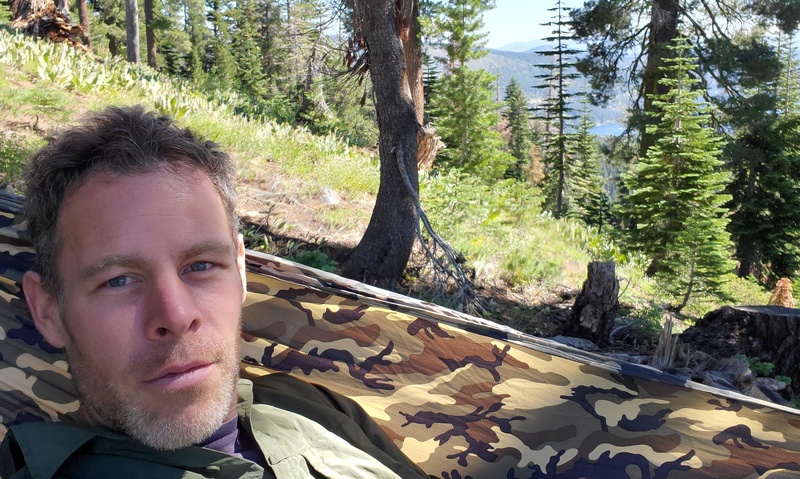In a previous post I wrote about my first attempt at fasting for longer than a day. It ended up being 70 hours.
For the first 1 or 2 days afterward, I noticed some very positive effects. I felt more disciplined and focused. I had more creative ideas about what I wanted to do with my time, and more motivation to do them. I was more content being still and able to concentrate better.
Over the course of the next week and a half or so, I felt these effects wane for the most part, although I did notice several urges to organize and simplify my physical and digital belongings, which may or may not have been related to the fast.
As I wrote before, I’m not sure how much of these effects were due to the fast itself, being outdoors (day and night), or being “on retreat” away from cars, people, and most technology (although I did have some internet access).
Regardless, I decided I wanted a “booster” fast. The power at home was out for a repair, which I decided was a fine time to pack up the tent and head out to the same spot again.
Isolating individuality vs restrictive tribalism
I noticed during the 3 hour walk there that I found myself listening to the book “Tribe” by Sebastian Junger, which is essentially a treatise on how discontented and anxious humans become when they don’t have deep and consequential bonds with each other, despite the individual freedom of choice that modern society gives us. Junger is a good writer and gives numerous paradoxical examples of situations (e.g. wars, natural disasters, economic depressions, etc) in which people say they are happier with tribal bonds despite the traumatic circumstances, than they are without tribal bonds in “good times.” This idea made me uncomfortable, given my proclivity to fear such traumatic circumstances and to spend a lot of time alone with myself, knowing that I do feel many of the effects of isolation that Junger researched. I also intuit that the time I spend in nature is a protective factor in mitigating these effects, since my anxiety and sense of isolation tends to ameliorate when I get into the woods.
Despite believing people’s subjective reports that they felt happier under huge stress with strong bonds, I can’t help but feel that they might be experiencing some memory bias of their retrospective accounts. Cognitive scientists have studied how our “momentary experience” (how we actually feel in a moment) does not match our “retrospective ratings” of emotions we recall from those moments. I know that many of the activities I do (long distance running, backpacking, wilderness fasting, cold water immersion) are sometimes referred to as “type 2 fun” (not fun to do so much as to talk about later), and I wonder if being on a war deployment with a tribal “brotherhood” might have some similar attributes.
The book left me pondering what the solution is besides forfeiting the individual freedoms that modernity affords us in order to merge with a tribe, which I’m still not convinced is something I truly want in the long term. My individuality is simply too important to me, despite the sense of loneliness and isolation it sometimes entails. And so far my best guess is to maintain the individuality while making a substantial effort to incorporate social activities with one or more other people, creating more times in which their is neither codependency or counter-dependency (aversion relying on others), but something like “interdependency,” which I’d define as a mutually optional and time-limited (but not essential) dependence on others. This is contrasted with codependency in which the reliance is neither optional nor time-limited.
The fast structure
Anyways, that was a long digression but seemed relevant to the activity of trekking off for a solo fast.
I also mention it to note that I was having a hard time that day simply walking without the external stimulation of an audiobook, which is a sure sign to me that I’m stuck in some experiential avoidance (using other, smart people’s thoughts to distract me from what’s going on inside, especially at a sub-conscious and emotional level).
One thing I noticed was the lack of novelty that this second fast had compared with the first one. There was, realistic or not, more of a sense that I knew what this would be like.
As far as the timing of my fast, it went something like:
- Monday at 10 pm (large meal)
- Tuesday at 3pm (small meal of 1 avocado, 1/2 can of black beans, and about 2 cups of raw spinach). I don’t normally eat this way but the power was out and I wanted to eat some of the food that likely would go bad without refrigeration.
- Broke fast Wednesday evening around 9 pm.
So the fast could be seen as 30 hours without food (Tuesday to Wednesday), or 47 hours with only the one small (by my standards) meal. It was quite modest compared to the previous 70 hour fast, but like I said I was looking for more of a booster effect. I planned on staying another night outside, but a social opportunity came up that I felt was important to get ready for.
Also, I was not into counting hours so much this time, especially knowing it’d be less than last time. I wanted to try measuring the success more by the internal, experiential sense that something positive was occurring.
Nature circadian reset
I was hungry going to bed just a few hours after arriving at my site, having only eaten a little in the past 24 hours and having hiked 7 miles and 1500 feet elevation gain, as well as some significant running the previous few days. I layed awake for several hours, which I had expected, as is typical for me my first night outside, horizontal 3-4 hours sooner than my circadian rhythm was accustomed to. I woke up with the energetic birds and sun around 6 am but laid semi-conscious until the tent became a morning oven. As in the previous fast, I drank some water and went to the hammock I’d set up, not feeling a ton of energy after the minimal sleep and lack of food. I laid there for a while, feeling the mild hunger waves and the emotions surfacing.

Practice: digital cleanup
I decided that I wanted to spend some time going through old previously written pieces that sit in a folder and wait for deletion, archiving, or polishing to be post-worthy. My motivations for this activity were likely mixed. On the one hand I was looking for a distraction from the unpleasantness of fasting and repressed emotions from the past week or so. On the other hand, I felt, and feel, that such “document cleanup” or digital housekeeping can be a mindfulness practice, especially when my intention is to simplify and remove a lot of old thinking. I tried to employ the maxim, “when in doubt throw it out.” Like throwing out old physical possessions with sentimental value, deleting old writing that I know isn’t that great and isn’t likely salvageable for sharing in the future, can take some willpower to feel some mini-grief bubbles to “let go.” Also similar to getting rid of physical objects, I often feel a relief when I’ve deleted some file that I no longer need to look at and think, “should I turn that into something?” What I end up saving seems far less important than the practice of letting go of old notions and thoughts, and I think about the the Tao te Ching chapter:
In pursuit of knowledge,
every day something is added.
In the practice of the Tao,
every day something is dropped.
Less and less do you need to force things,
until finally you arrive at non-action.
When nothing is done,
nothing is left undone.
True mastery can be gained
by letting things go their own way.
It can’t be gained by interfering.
Lao Tzu (Tao Te Ching)
In meditation, I watch my thoughts and feelings arise and practice letting them go, which feels like a “practice of the Tao.” I get a similar feeling of this practice by doing something like going through old documents and “dropping” old writing that is no longer alive in me enough to breathe life into.

Practice: Mental cleanup
After a point though, I felt tired and less able to feel confident in my decision: drop or keep?
So I set my timer for 60 minutes to indicate a commitment to practice dropping thoughts and releasing feelings for that stretch of time, and did “hammock meditation.”
I fell asleep for the first 15 minutes, a welcome power reboot. The sun blasted my black phone into overheating mode.
Around minute 30 I felt some twitching to go back to digital minimalism. That’s the queue that “the work” of meditation is starting. The next 30 minutes, the practice was to:
- Notice the urge
- Don’t follow the urge
- Go back to the body
- Notice the thoughts
- Briefly categorize the thoughts
- Let go of the thoughts
On step 5 above, I personally find it important to categorize the thoughts because I find that it makes them easier to let go of. Putting our thoughts into an emotional category (e.g. shame thought, anxiety thought, nihilism thought, discouragement thought, lonely thought, anger thought, sadness thought, etc), or a core schema category (e.g. “I can’t do it”, “I’m not okay”, “I’m not loved”), helps me let go of the thoughts in the moment and similar ones in the future.
It’s a bit like getting rid of physical possessions. Say you have 7 toothbrushes at home and want to keep only 2. Before you do that, you need to first realize that you have so many toothbrushes. This is why Marie Kondo advises grouping similar possessions together, so that we can actually see how much redundancy there is. If it’s all contained in one place, it’s far easier to get rid of the 80%-90% that we don’t need. I find that placing recurring thoughts into mental “buckets” has a similar effect (“I definitely don’t need so many ___ thoughts lying around, I can get rid of most of these”).
Centerpiece insight: “not feeling okay on the inside” is the root problem
The sun directly overhead made heat into the object of awareness for the last 10 minutes of the hour. Then I found some shade under a huge tree and rehydrated with mountain stream water. I was starting to feel a bit emptier mentally, which made space for more acute awareness of the physical sensations from the fasting (mild pangs in the stomach, subtle weakness and ease).
I decided to journal for a while and noticed themes of loneliness, fear, and frustration, and wanting things in my life to be different than they are. Then I found myself finding a new episode of Michael Singer’s new podcast, episode #3. I found myself really enjoying the first two episodes, and felt like giving this one a try, and found it really relevant.
I’m not sure how much of that relevance was due to the physical and mental cleaning of the previous day, making me more receptive to new inputs. I think this is a large factor, as I’ve noticed that when I feel mentally “full” there is no writing or speaking in the world that can seem useful or engage me.
I also think I really resonate with this particular podcast. The message it conveyed isn’t new of course, but I like Singer’s personality, collection of metaphors, and somewhat blunt way of putting things. He talked about how wanting things to be different (which I had just journaled about) all stems from “not feeling okay on the inside” and cited the typical examples that we tend to look towards for outside relief from the not-okay-inside affliction: romantic relationships, status, job success, wealth acquisition, family / relationship success, etc. Some memorable statements that I’ll go ahead and inaccurately paraphrase:
- Exceedingly few people in our society even realize this is the condition we’re in, and even fewer actually want to look at it and work with it.
- Trying to feel okay with external changes is like trying to cure stomach problems with Pepto-Bismol. When we get the life circumstance that we think we need, it only assauages us very temporarily and doesn’t address the root cause, which makes the not okay feeling resurface quickly.
- Most people go their entire lives thrashing like a drowning person, trying to avoid what they think they can’t endure, and obtain what they think they do need (our spiritual Pepto-Bismol), rather than learning how to feel peaceful on the inside regardless of the particular human experience that we’re actually having.
- The craving and avoidance prevents us from actually appreciating and enjoying what we do have, the life we actually do have, since we’re constantly wishing that we were doing something else, being someplace else, being someone else, and being with someone else. Rather than a spontaneous adventure to enjoy, we see life as a trauma taking us where we don’t want to be. And we suffer from the resistance to our lack of control. It also prevents us from seeing every experience as beneficial and something to grow from (including and especially the “failures” in life (e.g. divorce) or haphazard misfortunes.
I don’t think the podcast focused much on how to address the root of suffering. But I felt that I have plenty of such practices (for example, self-guided wilderness fast / meditation-retreats). I know what some remedies are for the not-okay-on-the-inside feeling, I just need occasional reminders to focus toward them and to let go of my mind’s offerings of superficial pseudo-solutions, like obtaining some future-based and elusive milestone of relationship, career, or personal success. This podcast episode, combined with the receptiveness from the the mental and physical fast/retreat, provided me with the reminder I needed. And writing this now (3 days after returning home) reinforces that reminder and lesson. It is a mini-pearl from yet another mini-hero’s journey.
As I said, some social plans for the next evening began to materialize, and I felt that I could continue my introspection on a long early run in the morning. I did pause and consider if I was making the “right” choice to end the fast early. Was I falling for another convincing mind ploy to get me to chase a certain experience on the false promise of contentment? I decided that it would depend on my mindset, whether I stayed to fast longer or when home to regroup. Whichever option I chose, I could potentially screw it up or make it a beneficial practice. In either case I could think, “doing ____ will make me happy” rather than “my task is to feel okay on the inside, given I’ve decided to do ____.” That was the whole point: it didn’t matter that much what I decided in this case. It only mattered that I carried the right mindset and intention with me, whether I stayed or left early.
Breaking fast
I remember the walk home feeling long, with a lot of fantasies about eating. Also a great practice of continually bringing myself to the here and now (I’m not home yet, be here now).
I broke fast with about 20 grams of bone broth powder protein, per some recommendations I found online. I didn’t wait the 60-90 minutes after that however before having the first “normal” meal. Maybe it was a half hour. I don’t think it mattered. I had a big appetite and ate mindfully with conscious choices. I didn’t experience discomfort afterward. So far breaking fasts has felt as complicated as I’ve heard some say it is. I guess that is an individual difference that varies person-to-person.
Conclusion: booster effects
So 3 days later, I can say that I did get some booster effects I was after, similar to the ones mentioned above from the first fast. I noticed that, especially after I ate and broke the fast, that I felt a lightness and ease and greater appreciation for simple things, like a small bowl of vanilla ice cream I enjoyed later that evening. I’ve felt more productive and able to more quickly shake off negative thoughts and engage in practices when I need them. I’ve been more disciplined about consistent bedtime and waking up times, and been more mindful about what to consume (food and media) and what to pass on. Paradoxically, focusing on the “root” goal of “feeling okay on the inside” seems to make pursuing improvement in external circumstances easier, perhaps since there is less attachment to, and anxiety around, achieving specific outcomes. There is also more confidence involved in having an internal goal (i.e., nervous system regulation) over which I have more control over, than external goals over which my degree of control is highly uncertain.
So I’ve done a 70 hour fast and a 30 hour fast now. I think the next target might be around 48 hours, in the middle of the two, of course not being too particular about the exact number. I feel grateful to have discovered this practice as a tool that, so far, seems effective and powerful. As far as frequency of use, I imagine every couple of weeks would be ideal, but I’d need more experience to know that.




